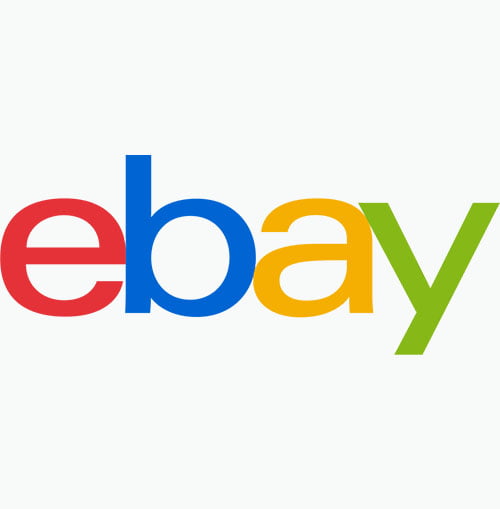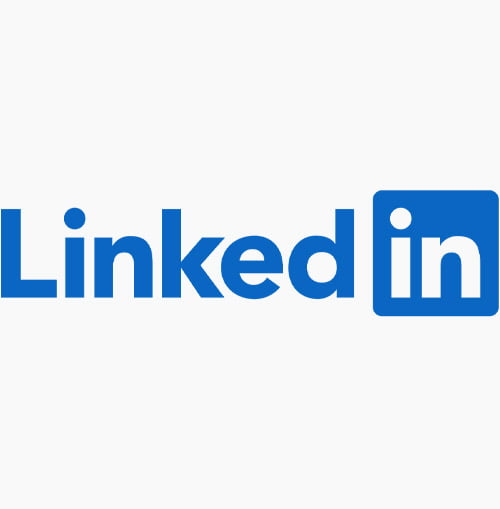Brand identity development consultancy services kampala uganda
To develop a brand identity for Isazeni Solutions SMC in Kampala, Uganda, there are several steps you can take to ensure the consultancy services are tailored to the company’s values, mission, and market

Below is a comprehensive breakdown of the consultancy services you can offer to help establish a strong and unique brand identity.
- Brand Discovery & Strategy Development
- Mission and Vision Refinement: Understand the core purpose of Isazeni Solutions and how they aim to make an impact in the market. Help define their mission, vision, and values clearly.
- Target Audience Analysis: Identify key customer segments for Isazeni Solutions. Research demographic, psychographic, and behavioral data to understand who the brand is speaking to, their needs, and pain points.
- Competitive Analysis: Conduct research to analyze competitors in the market and identify what makes Isazeni Solutions unique. This will help you carve out a distinct positioning.
- Brand Positioning
- Unique Value Proposition (UVP): Work with Isazeni Solutions to develop a compelling UVP that clearly communicates why customers should choose them over competitors.
- Brand Personality: Define the brand’s tone of voice and personality—whether it’s formal, friendly, innovative, authoritative, etc.—based on the target audience and company culture.
- Logo and Visual Identity Design
- Logo Design: Create a simple, memorable, and versatile logo that embodies the core values of Isazeni Solutions. This logo should be adaptable to various platforms (print, digital, signage).
- Color Palette & Typography: Develop a color palette and typography set that align with the company’s personality and resonate with the target market.
- Visual Style Guide: Create a visual identity manual that specifies how the brand’s assets (logos, colors, typography, imagery) should be used across all communication channels.
- Brand Messaging and Content Development
- Tagline Creation: Craft a catchy and meaningful tagline that communicates the essence of Isazeni Solutions.
- Key Messages: Develop clear and consistent messaging that speaks to the brand’s audience, focusing on the benefits they offer and their unique selling points.
- Content Strategy: Provide content guidelines for the website, social media, and other marketing materials that are in line with the brand’s voice and positioning.
- Website Design & Development
- User Experience (UX): Ensure the website is intuitive and easy to navigate, with clear calls to action.
- Content Management System (CMS): Build or recommend an easy-to-use CMS for Isazeni Solutions to update their site regularly.
- SEO Strategy: Integrate SEO best practices to ensure the website ranks well for relevant search terms.
- Responsive Design: Ensure the website is fully responsive and optimized for both desktop and mobile users.
- Brand Collateral & Marketing Materials
- Business Cards & Letterheads: Design professional business cards, letterheads, and other stationery that reflect the brand’s visual identity.
- Brochures and Flyers: Create brochures and flyers that highlight services and key features of Isazeni Solutions, ensuring consistency in design and messaging.
- Social Media Assets: Design templates for social media posts, banners, and profile pictures that maintain brand consistency online.
- Brand Implementation and Rollout
- Brand Guidelines: Develop a comprehensive brand guidelines document that covers logo usage, typography, colors, tone of voice, imagery, and other design elements.
- Internal Brand Training: Conduct workshops or provide training for employees at Isazeni Solutions to ensure they understand the brand identity and can consistently apply it across touchpoints.
- Brand Rollout Plan: Create a strategic plan for the launch of the new brand identity, including marketing campaigns, social media announcements, and public relations efforts.
- Brand Monitoring and Adjustment
- Brand Audit: Offer periodic audits to evaluate the brand’s performance and relevance in the market.
- Market Feedback: Gather feedback from customers and stakeholders to assess the effectiveness of the brand identity.
- Continuous Evolution: Help Isazeni Solutions adjust their brand identity as needed based on market trends and business growth.
Deliverables
- Brand Strategy Document: A comprehensive report detailing the brand positioning, audience insights, and strategic direction.
- Logo Files & Visual Assets: All logo variations, color palettes, typography, and other visual elements.
- Brand Guidelines: A guide for maintaining consistent brand communication and visual identity.
- Website & Digital Assets: A fully developed website (if part of the scope) and any digital assets for social media or online presence.
Target Audience
Isazeni Solutions SMC could focus on:
- Small and Medium Enterprises (SMEs): Offer technology solutions, consultancy, and business management tools.
- Corporates & Institutions: Provide enterprise-level software solutions and strategic consulting.
- Startups: Help new businesses create and implement technology-driven solutions for growth.
Project Timelines & Pricing
- Timeline: A typical brand identity development process can take anywhere from 4 to 8 weeks depending on the scope and complexity.
- Pricing: Pricing varies based on the scope of work. It would be ideal to offer tiered packages that cater to different levels of service, ranging from foundational brand identity to a full, comprehensive branding and marketing solution.
Why Choose Your Consultancy?
- Local Insight: As a Kampala-based consultancy, you can offer insights into the local market trends and cultural nuances that are important for crafting a relatable and appealing brand.
- Holistic Approach: You focus on building a cohesive brand identity that is not just aesthetically pleasing, but strategically aligned with the company’s goals and market positioning.
- Long-term Partnership: Offer ongoing support to ensure the brand evolves in line with the business growth, market changes, and customer needs.

What are brand identity development consultancy services?
Brand identity development consultancy services focus on helping businesses create, refine, and maintain a strong and distinct brand presence in the market. These services involve working with organizations to define their brand’s core values, visual elements, messaging, and customer perceptions in a way that differentiates them from competitors and resonates with their target audience. A brand identity is more than just a logo; it encompasses the full experience a company offers its customers, including how they feel, think, and interact with the brand.
Key Elements of Brand Identity Development Services
- Brand Discovery and Strategy
This is the foundational stage where the consultant helps the company understand who they are, what they stand for, and where they want to go. This involves: - Defining the company’s mission, vision, and values.
- Identifying the target audience and their needs.
- Conducting competitor analysis to identify gaps and opportunities in the market.
- Crafting a unique value proposition (UVP) that communicates the brand’s differentiators.
- Brand Positioning
Brand positioning is about establishing how the brand is perceived in the minds of its target audience relative to competitors. This includes: - Crafting the brand’s personality and tone of voice.
- Developing key messages and the brand story.
- Identifying what makes the brand special and relevant to its audience.
- Defining how the brand fits into the larger market landscape and its place in the customers’ lives.
- Visual Identity Creation
Visual identity is how the brand communicates visually across various touchpoints. Consultants help businesses design: - Logo: The symbol or graphic that represents the brand’s core essence.
- Color Palette: A set of colors that align with the brand’s emotional tone and personality.
- Typography: Fonts and style guidelines that reinforce the brand’s visual style.
- Imagery Style: The kind of photography, illustrations, or graphics used in brand communication.
- Visual Style Guide: A document that ensures consistency in the usage of these visual elements across all mediums.
- Brand Messaging
Brand messaging refers to how the brand communicates its value proposition, core messages, and narrative to its audience. This includes: - Developing a brand tagline or slogan that succinctly conveys the brand’s essence.
- Creating consistent and impactful messaging for key touchpoints, like websites, social media, and advertising.
- Defining the tone of voice: whether the brand should sound friendly, professional, witty, authoritative, etc.
- Customer Experience and Touchpoints
The way customers interact with the brand should reinforce its identity. A consultancy will help companies optimize the customer experience across all touchpoints, including: - Website: The brand’s online presence and digital experience.
- Packaging: For product-based businesses, packaging is a key touchpoint.
- Social Media: Ensuring consistency in tone, content, and visual elements on social platforms.
- Retail or Physical Spaces: Ensuring that physical stores, offices, or other environments reflect the brand identity.
- Brand Implementation and Guidelines
This involves ensuring that the newly developed brand identity is consistently applied across all channels. Consultants will: - Provide a brand manual or brand guidelines for the business, which outlines how to use logos, colors, typography, imagery, and messaging across all marketing materials.
- Train employees or marketing teams on how to communicate and represent the brand accurately.
- Assist with the roll-out and implementation strategy, ensuring all marketing channels, from websites to print materials, align with the new brand identity.
- Brand Monitoring and Refinement
After the initial implementation, a good consultancy will also offer ongoing services to monitor how the brand is performing in the market. This could include: - Brand audits: Reviewing how the brand is perceived and identifying areas for improvement.
- Market research: Gathering feedback from customers, stakeholders, or the wider market to see how the brand is resonating.
- Adjustments and refinements: Modifying brand elements or strategies as needed based on performance or changes in market conditions.
Why Brand Identity is Important
A strong brand identity is essential for differentiating a business in the market and creating emotional connections with customers. It helps build trust, loyalty, and recognition. Here’s why a well-crafted brand identity is so important:
- Differentiation: A unique and well-defined brand identity helps a business stand out in a crowded market.
- Trust and Credibility: Consistent branding builds credibility and trust with customers, making them more likely to choose the business over competitors.
- Emotional Connection: A brand identity that resonates with customers’ values or desires fosters emotional connections, leading to long-term loyalty.
- Market Recognition: A strong visual and verbal identity makes the brand memorable, and more easily recognizable across various platforms.
Typical Deliverables from Brand Identity Development Consultancy Services
- Brand Discovery and Strategy Report: Documenting the research, analysis, and strategic direction.
- Logo and Visual Identity Assets: Finalized logo files, color codes, typography specifications, and other graphic elements.
- Brand Guidelines: A comprehensive guide on how to use the brand’s visual and verbal elements consistently.
- Messaging Framework: Clear and concise messaging guidelines for various communication channels.
- Website or Digital Presence: Optimized websites or digital assets that align with the brand identity.
- Marketing Collateral: Business cards, brochures, social media templates, and other marketing materials.
- Brand Implementation Plan: A step-by-step plan for implementing the brand identity across various channels and departments.
Types of Businesses That Need Brand Identity Development
- Startups and New Businesses: They need a solid foundation to launch their brand and create a strong first impression in the market.
- Established Companies Looking for a Rebrand: Businesses that have evolved over time or have changed their business direction may need to update their brand identity to reflect their new vision or market position.
- SMEs and Corporates: Both small and large businesses benefit from a clear and coherent brand identity that aligns with their business goals.
- Nonprofits and Social Enterprises: These organizations need a brand identity that conveys their mission, vision, and social impact.
In summary, brand identity development consultancy services help companies craft a comprehensive, coherent, and appealing brand that connects with their audience, stands out in the market, and supports their business objectives. Whether a business is launching a new brand or refining an existing one, these services ensure that the brand is strategically positioned and visually represented in a way that resonates with customers and drives business growth.

How much are brand identity development consultancy services?
The cost of brand identity development consultancy services in Kampala, Uganda, can vary based on several factors, including the scope of the project, the complexity of the brand, the consultancy’s experience, and the services included. Typically, brand identity development can range from affordable packages for small businesses to premium services for large corporations. Below, I will break down the factors that influence pricing and provide examples of cost structures with tables.
Factors Affecting the Cost of Brand Identity Consultancy in Kampala, Uganda
- Scope of Services
- Basic Package: Includes foundational services like logo design and color scheme.
- Comprehensive Package: Includes logo, visual identity, website design, brand guidelines, and messaging development.
- Premium Package: Includes everything from basic to comprehensive services, plus ongoing brand management, market research, and strategy consulting.
- Business Size and Complexity
- Startups and Small Businesses: These typically need more cost-effective solutions with fewer design assets and simpler strategy.
- Medium to Large Enterprises: Larger businesses require more in-depth research, more sophisticated branding strategies, and a broader set of deliverables.
- Consultancy’s Experience
- Established consultancies with more experience and reputation often charge more for their services.
- Newer or local agencies may offer more affordable options.
- Additional Services
- Services like website development, social media strategy, copywriting, and marketing campaign design can increase costs.
Example Pricing Structures for Brand Identity Development in Kampala
Below is an example of different pricing models based on the scope of services, and it reflects the general market rates in Kampala. These rates can fluctuate based on specific needs and the scale of the project.
1. Basic Brand Identity Package
- Scope of Work: Logo design, basic visual identity (color palette, typography), and a set of brand guidelines.
- Target Audience: Small businesses, startups, and individual entrepreneurs.
|
Service |
Description |
Estimated Cost (UGX) |
|
Logo Design |
Custom logo that reflects the brand’s personality. |
1,500,000 – 3,500,000 |
|
Visual Identity (Colors & Fonts) |
Color palette and fonts that align with the brand. |
500,000 – 1,000,000 |
|
Brand Guidelines |
A simple document that outlines the brand’s visual identity and usage rules. |
1,000,000 – 2,000,000 |
|
Total Estimated Cost |
3,000,000 – 6,500,000 |
2. Standard Brand Identity Package
- Scope of Work: Logo design, visual identity (colors, typography), brand messaging, and a website design.
- Target Audience: SMEs, mid-sized businesses, and brands looking to refine their identity.
|
Service |
Description |
Estimated Cost (UGX) |
|
Logo Design |
Custom logo creation with several revisions. |
3,000,000 – 6,000,000 |
|
Visual Identity (Colors & Fonts) |
Color palette and fonts designed for digital and print consistency. |
1,000,000 – 2,000,000 |
|
Brand Messaging |
Development of key messages, value proposition, and tagline. |
1,500,000 – 3,000,000 |
|
Website Design (Basic) |
Basic website design (up to 5 pages, responsive design). |
3,000,000 – 7,000,000 |
|
Brand Guidelines |
A comprehensive guide for internal and external use. |
2,000,000 – 3,500,000 |
|
Total Estimated Cost |
10,500,000 – 21,500,000 |
3. Premium Brand Identity & Strategy Package
- Scope of Work: Full brand identity development including logo, visual identity, comprehensive brand strategy, messaging, website, marketing materials, and brand roll-out support.
- Target Audience: Large enterprises, established businesses, and those seeking a complete overhaul of their brand.
|
Service |
Description |
Estimated Cost (UGX) |
|
Logo Design |
Custom, high-quality logo design with multiple concepts. |
4,000,000 – 8,000,000 |
|
Visual Identity |
Full visual identity, including colors, typography, and imagery guidelines. |
2,000,000 – 4,000,000 |
|
Brand Strategy |
Includes market research, brand positioning, and development of the brand story. |
3,500,000 – 6,000,000 |
|
Brand Messaging |
Tailored messaging and taglines for different platforms. |
2,000,000 – 4,000,000 |
|
Website Design (Advanced) |
Custom, fully responsive website with up to 10 pages. |
6,000,000 – 12,000,000 |
|
Marketing Collateral |
Brochures, business cards, social media templates, and other marketing materials. |
2,500,000 – 5,000,000 |
|
Brand Guidelines |
In-depth guidelines for maintaining consistency across all platforms. |
3,000,000 – 5,000,000 |
|
Brand Roll-out Support |
Strategy for implementing and promoting the new brand, including PR and social media campaigns. |
4,000,000 – 8,000,000 |
|
Total Estimated Cost |
26,000,000 – 52,000,000 |
Additional Cost Considerations
- Market Research: If the brand identity development includes a comprehensive market research phase (such as focus groups, surveys, or competitive analysis), this can add 2,000,000 to 5,000,000 UGX to the total cost.
- Digital Marketing Strategy: Some clients may request an additional digital marketing strategy, which can range from 3,000,000 to 7,000,000 UGX depending on the scope.
- Social Media Management: Ongoing social media design, content creation, and management can add 1,000,000 to 3,000,000 UGX per month for ongoing support.
Breakdown of Services
|
Service |
Small Business (UGX) |
Medium Business (UGX) |
Large Business (UGX) |
|
Logo Design |
1,500,000 – 3,500,000 |
3,000,000 – 6,000,000 |
4,000,000 – 8,000,000 |
|
Visual Identity (Colors & Fonts) |
500,000 – 1,000,000 |
1,000,000 – 2,000,000 |
2,000,000 – 4,000,000 |
|
Brand Messaging |
500,000 – 1,500,000 |
1,500,000 – 3,000,000 |
2,000,000 – 4,000,000 |
|
Website Design |
3,000,000 – 7,000,000 |
4,000,000 – 10,000,000 |
6,000,000 – 12,000,000 |
|
Marketing Collateral |
500,000 – 2,000,000 |
1,500,000 – 4,000,000 |
2,500,000 – 5,000,000 |
|
Brand Guidelines |
1,000,000 – 2,000,000 |
2,000,000 – 3,500,000 |
3,000,000 – 5,000,000 |
|
Total Cost |
3,500,000 – 6,500,000 |
10,500,000 – 21,500,000 |
26,000,000 – 52,000,000 |
Conclusion
The cost of brand identity development consultancy services in Kampala, Uganda depends on the specific needs of the client and the level of sophistication required. For small businesses or startups, services can start as low as UGX 3,000,000 for basic branding. For medium and large enterprises seeking comprehensive strategies, websites, and collateral, the cost can range from UGX 10,500,000 to 52,000,000 or more.
It’s important for businesses to have a clear understanding of their needs and goals before engaging with a consultancy to ensure they get the right services at the right price point.

Types of brand identity development consultancy services
Brand identity development is an essential aspect of building a strong, memorable, and impactful brand. In Kampala, Uganda, brand identity consultancy services can vary widely depending on the needs of businesses and the scope of the project. Here’s a breakdown of 10 types of brand identity development consultancy services that are commonly offered in Kampala, Uganda:
- Brand Strategy Development
Purpose: This service focuses on laying the foundation for the brand’s long-term growth and positioning in the market. It helps businesses define their vision, mission, values, and unique selling proposition (USP).
Key Services:
- Brand positioning: How the brand is positioned relative to competitors.
- Market research: Understanding customer needs, behaviors, and pain points.
- Competitor analysis: Identifying and differentiating from competitors.
- Brand vision and mission: Defining the future direction and purpose.
Example: A startup in Kampala may hire a brand consultancy to clarify their target market, define their positioning, and create a brand strategy that resonates with local consumers.
- Logo and Visual Identity Design
Purpose: This is one of the most critical aspects of brand identity development. It involves creating the visual elements that represent the brand, such as logos, typography, color palettes, and imagery.
Key Services:
- Logo design: Creating a symbol that represents the brand.
- Color schemes and typography: Selecting colors and fonts that reflect the brand personality.
- Visual elements: Developing other visual components like icons and graphics.
- Brand style guide: Documenting rules on how to use the logo, colors, and fonts.
Example: A local Ugandan restaurant may need a new logo and visual elements that represent its cuisine and culture while appealing to both locals and international tourists.
- Brand Messaging and Copywriting
Purpose: This service focuses on the development of the tone, voice, and language used in all communications to ensure consistency and alignment with the brand’s identity.
Key Services:
- Brand messaging: Creating key messages that communicate the brand’s values and promise.
- Tagline development: Crafting a memorable tagline or slogan that sums up the brand.
- Copywriting for marketing materials: Writing content for websites, brochures, ads, etc.
- Tone of voice: Defining how the brand speaks (e.g., friendly, professional, playful).
Example: A technology company in Kampala might require compelling website content, social media posts, and a catchy tagline to capture the attention of tech enthusiasts.
- Brand Guidelines Creation
Purpose: Brand guidelines ensure that the brand’s visual and verbal elements are used consistently across all touchpoints. This service provides businesses with a comprehensive manual on how to apply their brand identity correctly.
Key Services:
- Logo usage rules: Guidelines on how the logo should appear in different media.
- Typography and color specifications: Instructions on font styles, sizes, and color codes.
- Brand voice: Defining how the brand should sound in written communication.
- Image usage: Rules for selecting brand-appropriate photos and illustrations.
Example: A local fashion retailer in Kampala would need clear brand guidelines to ensure consistency across all marketing channels, from packaging to social media.
- Website and Digital Presence Design
Purpose: A strong digital presence is essential for modern brands. This service focuses on creating a website and other digital assets that align with the brand’s visual and messaging identity.
Key Services:
- Website design: Crafting a user-friendly, responsive website that reflects the brand identity.
- SEO optimization: Ensuring that the website is optimized for search engines.
- Social media templates: Designing templates for Facebook, Instagram, and LinkedIn that maintain brand consistency.
- E-commerce setup: For brands looking to sell products online.
Example: A Ugandan e-commerce platform might need a professionally designed website with integrated payment systems, social media pages, and a design that aligns with the company’s brand values.
- Brand Positioning and Market Research
Purpose: This service helps businesses understand their place in the market, their competitors, and the needs of their target audience. It provides the data and insights necessary to position the brand effectively.
Key Services:
- Customer research: Conducting surveys, focus groups, and interviews to understand customer behavior.
- Competitor analysis: Mapping out key competitors’ strengths and weaknesses.
- Market segmentation: Identifying different customer segments for targeted marketing.
- Positioning strategy: Crafting a strategy that highlights what makes the brand different and valuable to customers.
Example: A startup in Kampala offering new financial services might require detailed market research to understand the preferences of its target audience and the competitive landscape.
- Brand Experience Design
Purpose: This service focuses on creating a seamless and consistent experience for customers across all touchpoints, including physical spaces, customer service, and product interactions.
Key Services:
- Customer journey mapping: Analyzing the entire customer experience from discovery to purchase and beyond.
- Brand touchpoint design: Ensuring all customer touchpoints (physical, digital, customer service) reflect the brand identity.
- Retail or office space design: Designing physical environments that align with the brand (e.g., a branded store or office).
- Packaging design: Ensuring products are packaged in a way that reflects the brand’s identity.
Example: A retail brand in Kampala may want to redesign its store layout, product displays, and customer service interactions to create a cohesive brand experience that aligns with its mission.
- Rebranding and Brand Revitalization
Purpose: This service is aimed at businesses looking to refresh or completely overhaul their existing brand. This could be due to a change in direction, target audience, or a desire to modernize the brand.
Key Services:
- Brand audit: Assessing the current brand’s strengths and weaknesses.
- Redesigning visual elements: Updating logos, colors, and other visual aspects.
- Revamping brand messaging: Updating the brand’s key messages and values.
- Launch strategy: Strategizing the launch of the refreshed brand to the public.
Example: An established Ugandan hotel chain might undergo a rebranding to modernize its image, attract a younger demographic, and stay relevant in a competitive market.
- Social Media Branding
Purpose: Social media is an essential platform for building brand identity and engaging with customers. This service focuses on creating and managing a brand’s presence across social media platforms.
Key Services:
- Social media strategy: Crafting a plan for how the brand will communicate on platforms like Facebook, Instagram, Twitter, etc.
- Content creation: Designing graphics, videos, and posts that align with the brand.
- Community management: Engaging with followers and responding to comments, feedback, and inquiries.
- Campaign management: Running targeted ad campaigns and promotions.
Example: A Ugandan fashion influencer or retailer might hire a consultancy to create a visually appealing social media strategy that showcases their products and builds a community around their brand.
- Brand Monitoring and Evaluation
Purpose: Brand monitoring involves tracking the effectiveness of the brand in the market, assessing customer feedback, and making adjustments to improve brand performance.
Key Services:
- Brand audit: Periodic evaluations of how the brand is perceived.
- Customer feedback collection: Surveys, reviews, and social media sentiment analysis to gauge brand perception.
- Competitive benchmarking: Tracking competitors’ performance and identifying areas for improvement.
- Brand performance analysis: Using KPIs (Key Performance Indicators) to measure brand success in the market.
Example: A Kampala-based business may engage a consultancy to monitor how their brand is performing in the local market, gather customer feedback, and adjust their strategy to improve customer satisfaction and sales.
Conclusion
In Kampala, Uganda, brand identity development consultancy services cover a wide range of offerings that help businesses establish, refine, and strengthen their brand in the marketplace. Whether it’s creating a new brand from scratch, rebranding an existing one, or optimizing the customer experience, businesses can rely on specialized consultancy services to ensure they stand out and connect effectively with their target audience.
Each service is designed to contribute to building a coherent, consistent, and compelling brand that resonates with customers, differentiates from competitors, and ultimately drives business success.

Why is brand identity development consultancy services kampala uganda important
Brand identity development consultancy services in Kampala, Uganda, are vital for businesses seeking to establish, grow, or refine their brands in a competitive and ever-evolving market. Below are 10 detailed reasons why these services are important for businesses in Kampala and beyond:
- Helps Businesses Stand Out in a Crowded Market
Why it matters: Kampala, like many urban centers, is filled with businesses across various industries. Whether you’re in retail, hospitality, or tech, distinguishing yourself from competitors is crucial.
Brand Identity Benefits:
- A well-defined brand identity allows your business to stand out by visually and emotionally resonating with your target audience.
- For example, a local Ugandan coffee shop can differentiate itself by creating a unique logo, color scheme, and brand story that highlights its focus on organic, locally sourced coffee.
Impact: A strong brand identity can make a lasting first impression and ensure that potential customers recognize and remember your business.
- Builds Trust and Credibility
Why it matters: Trust is a fundamental factor in consumer decisions, especially in markets where competition is fierce and customer loyalty is hard to earn. In Kampala, where new businesses are constantly emerging, customers need assurance that a brand is reliable.
Brand Identity Benefits:
- Consistent branding across all platforms—website, social media, physical stores—reinforces the perception of professionalism and reliability.
- A well-established brand identity gives customers confidence in your business’s quality, improving their willingness to engage with and buy from you.
Impact: Trust and credibility are crucial in Uganda’s growing economy, especially for service-based businesses like banks, retail chains, or tech companies that handle personal data.
- Improves Customer Recognition
Why it matters: When consumers see a logo, color palette, or catchphrase, they should immediately recognize the brand behind it. This instant recognition is what separates a memorable brand from one that fades into the background.
Brand Identity Benefits:
- The design elements (logo, colors, fonts) and consistent messaging make your brand instantly recognizable, whether on social media, packaging, or advertising.
- A strong visual identity creates a connection that makes customers more likely to recall and prefer your brand.
Impact: For example, a Kampala-based clothing brand that uses consistent colors and modern design elements across its website, store, and social media can quickly become a household name.
- Enhances Emotional Connection with Customers
Why it matters: In Uganda, many consumers make decisions based on emotional factors, such as trust, familiarity, and connection. When a brand resonates emotionally, it leads to greater loyalty and repeat business.
Brand Identity Benefits:
- A well-crafted brand story, messaging, and visual elements can evoke emotions that create a sense of connection with the target audience.
- For example, a local NGO that focuses on community development can leverage its brand identity to build trust and a sense of shared purpose with its supporters.
Impact: By emotionally engaging with customers, businesses can foster brand loyalty and create long-term relationships, which are essential for sustained growth.
- Increases Perceived Value and Premium Positioning
Why it matters: A well-designed brand communicates value to customers. Whether a product or service is priced at a premium or is an everyday offering, the brand’s identity plays a significant role in how it is perceived.
Brand Identity Benefits:
- A polished, professional brand identity helps elevate the perceived value of your product or service, even in a market that might be price-sensitive.
- For instance, a high-end real estate agency in Kampala can use sophisticated branding to position itself as a premium provider, attracting high-net-worth clients.
Impact: Proper brand identity development ensures that your business can command the prices it deserves and appeals to the target market willing to pay for premium quality.
- Boosts Consistency Across All Channels
Why it matters: In today’s digital-first world, businesses in Kampala need to engage with customers across multiple channels—websites, social media, physical stores, advertising, and more. Without a consistent brand identity, customers may become confused or disconnected.
Brand Identity Benefits:
- Brand guidelines ensure that all marketing materials, communications, and interactions are uniform and cohesive.
- Whether a customer encounters your brand on Instagram, Facebook, or in person at a local shop, they should experience the same values, style, and messaging.
Impact: Consistency fosters brand recognition, builds trust, and creates a seamless experience for customers, regardless of where or how they engage with the brand.
- Helps Define the Brand’s Purpose and Vision
Why it matters: In Kampala, where businesses are increasingly competing for customer attention, having a clear brand purpose and vision can set a brand apart and provide a solid foundation for decision-making.
Brand Identity Benefits:
- A consultancy will help businesses define their mission, vision, and core values, which are key components of the brand identity.
- This clarity ensures that all marketing efforts, communications, and product/service offerings align with the brand’s overarching goals.
Impact: For instance, a startup focused on sustainability and eco-friendly products in Kampala can develop a strong identity around its mission to protect the environment, appealing to eco-conscious consumers.
- Facilitates Effective Communication
Why it matters: In a competitive market like Kampala, businesses need to communicate clearly with customers about their products or services. A well-developed brand identity ensures that messages are coherent, engaging, and aligned with the audience’s expectations.
Brand Identity Benefits:
- A solid brand identity shapes how the company communicates with its target audience, ensuring the right tone, language, and visuals are used.
- Brand messaging and voice guide how the company speaks across all media—online, print, advertisements, etc.
Impact: A technology brand in Kampala may choose a clear, authoritative tone for its messaging to convey expertise and reliability, whereas a fun and youthful brand may use a more casual, playful voice to appeal to younger consumers.
- Supports Marketing and Advertising Efforts
Why it matters: Kampala businesses need to ensure their marketing campaigns are impactful and well-received. A clear brand identity enhances the effectiveness of marketing campaigns by ensuring all elements align with the brand’s goals and values.
Brand Identity Benefits:
- A distinct and cohesive brand identity improves the effectiveness of ads, making them more engaging and memorable.
- Businesses can design marketing materials (e.g., brochures, social media ads, billboards) that are visually cohesive and reinforce their brand story.
Impact: A local Kampala fashion brand running an Instagram ad campaign will have more success with a cohesive look and messaging that reinforces its brand identity, attracting a loyal following.
- Increases Competitive Advantage
Why it matters: In Kampala, businesses are operating in increasingly competitive sectors, from hospitality to retail and tech. A strong brand identity is a powerful tool for gaining a competitive advantage.
Brand Identity Benefits:
- Developing a unique brand identity allows businesses to differentiate themselves from competitors in a meaningful way.
- A strong brand identity makes it easier for consumers to choose your product over others, especially when faced with similar offerings.
Impact: For example, a hotel in Kampala that focuses on offering an exceptional guest experience could create a brand identity built around comfort, luxury, and local culture, setting itself apart from competitors offering generic stays.
Conclusion
Brand identity development consultancy services in Kampala, Uganda, play a critical role in helping businesses stand out, build trust, and drive growth. Whether a company is just starting out or looking to refresh its existing brand, these services ensure that a brand is positioned effectively in the market, resonates with the target audience, and communicates its values clearly.
From enhancing customer recognition to supporting marketing efforts and creating emotional connections, a well-developed brand identity is one of the most powerful tools for businesses in Kampala to thrive in a competitive and dynamic marketplace.

Our strategies and approaches
Isazeni Solutions is a hypothetical or real consultancy service based in Kampala, Uganda, specializing in brand identity development. If Isazeni Solutions were offering brand identity development services, they would likely employ a range of strategies and approaches to ensure that the brands they work with stand out, resonate with their target audience, and are positioned effectively in the marketplace.
Below are 10 strategies and approaches that Isazeni Solutions might use in their brand identity development consultancy services:
- Comprehensive Brand Discovery and Research
Approach: Isazeni Solutions would begin the process with a thorough brand discovery phase to fully understand the client’s business, vision, target audience, competition, and market trends. This is crucial for laying the groundwork for a brand identity that resonates and stands out.
Strategy:
- Conduct market research to identify the latest industry trends, consumer behavior, and customer needs.
- Perform competitive analysis to ensure the brand is distinct in the market.
- Gather stakeholder insights through workshops or interviews with key people in the company.
Impact: This approach allows Isazeni Solutions to gather valuable insights that will inform the development of a unique and strategic brand identity.
- Defining a Unique Brand Positioning
Approach: Developing a clear and distinct brand positioning is essential for ensuring that a business can differentiate itself in a crowded marketplace like Kampala.
Strategy:
- Use the research phase to identify gaps in the market and opportunities for differentiation.
- Define the unique value proposition (UVP) and how the brand will be perceived by customers.
- Craft a brand positioning statement that succinctly communicates the essence of the brand and its place in the market.
Impact: This ensures that the brand occupies a meaningful position in the minds of consumers, helping it stand out from competitors.
- Developing a Compelling Brand Story
Approach: Isazeni Solutions understands the power of storytelling in connecting emotionally with customers. They would help clients articulate their brand story in a way that builds emotional engagement.
Strategy:
- Identify the brand’s origin story, its mission, and the journey that has led to its current place in the market.
- Create a narrative that resonates with the target audience’s values, needs, and emotions.
- Align the story with the brand’s vision and mission, ensuring consistency across all communication channels.
Impact: A compelling brand story fosters a deeper connection with customers, making the brand more memorable and relatable.
- Crafting a Visual Identity That Resonates
Approach: A core part of brand identity is the visual language—logos, colors, typography, and design elements. Isazeni Solutions would ensure that the visual identity is both aesthetic and functional.
Strategy:
- Design a unique logo that captures the brand’s essence and is versatile for various uses (digital, print, etc.).
- Select a color palette and typography that aligns with the brand’s personality (e.g., vibrant for energetic brands, minimalist for modern or luxury brands).
- Create iconography and other graphic elements that can be used consistently across digital and physical platforms.
Impact: A well-designed visual identity creates a memorable impression and reinforces the brand’s core values, making it instantly recognizable to customers.
- Creating Comprehensive Brand Guidelines
Approach: To ensure brand consistency, Isazeni Solutions would create detailed brand guidelines. This ensures that everyone—from internal teams to external partners—uses the brand assets correctly.
Strategy:
- Develop a brand manual that outlines logo usage, typography, color codes, imagery style, and messaging tone.
- Include guidelines on how to use brand assets across different platforms (website, social media, print, packaging).
- Provide brand application examples to show how the brand identity should be used in various contexts.
Impact: Brand guidelines provide consistency across all marketing materials and customer touchpoints, which builds trust and reinforces the brand’s image.
- Refining Brand Messaging and Voice
Approach: Isazeni Solutions would focus on creating clear, authentic, and consistent messaging that aligns with the brand’s identity and resonates with the target audience.
Strategy:
- Define the brand’s tone of voice, ensuring it matches the brand’s personality and values (e.g., friendly, authoritative, playful, or serious).
- Create a set of key messages that highlight the brand’s core attributes, benefits, and values.
- Develop taglines and slogans that succinctly capture the brand’s essence.
Impact: Strong, consistent messaging enhances communication, ensures clarity, and makes the brand more relatable and memorable.
- Tailoring Brand Experience Across All Touchpoints
Approach: Isazeni Solutions would take a holistic view of the brand experience by focusing on how the brand interacts with its customers across various touchpoints.
Strategy:
- Analyze the customer journey and identify key touchpoints (e.g., website, customer service, product packaging).
- Ensure that the brand’s visual identity, tone, and messaging are consistently applied across all touchpoints.
- Enhance the customer experience by aligning the physical and digital aspects of the brand with the identity (e.g., branded packaging, user-friendly website design, etc.).
Impact: A seamless brand experience fosters customer loyalty and increases satisfaction by ensuring consistency and alignment at every interaction with the brand.
- Optimizing the Digital Presence
Approach: With increasing digital interaction in Uganda, especially among younger consumers, Isazeni Solutions would focus on building a strong digital presence for clients.
Strategy:
- Redesign websites and online platforms to ensure they reflect the brand’s identity and provide a seamless user experience.
- Social media strategy: Develop a content plan and design templates for consistent brand presence across platforms like Facebook, Instagram, and Twitter.
- SEO and content strategy: Align the digital content (blogs, videos, etc.) with the brand’s messaging to enhance visibility and engagement.
Impact: A strong online presence not only boosts brand visibility but also strengthens customer relationships, especially in a mobile-first market like Kampala.
- Conducting Brand Audits and Performance Tracking
Approach: To ensure that the brand continues to perform well in the market, Isazeni Solutions would conduct regular brand audits and track the performance of the brand’s identity.
Strategy:
- Perform brand health assessments to evaluate how well the brand identity is resonating with customers.
- Monitor customer feedback through surveys, reviews, and social media sentiment analysis.
- Use data analytics to track how well the brand is performing across different channels (website traffic, social media engagement, etc.).
Impact: Regular audits and performance tracking help ensure the brand remains relevant, evolving with the market and staying aligned with customer expectations.
- Facilitating Brand Launches and Rollouts
Approach: Isazeni Solutions would offer comprehensive support for businesses launching new brands or refreshing existing ones, ensuring the brand’s debut makes a significant impact.
Strategy:
- Develop a brand launch plan that includes a strategic rollout across digital, print, and physical channels.
- Design promotional campaigns (e.g., social media contests, influencer partnerships, PR events) to create excitement and awareness around the brand launch.
- Provide post-launch support to ensure that the brand’s presence continues to grow and the rollout stays consistent.
Impact: A well-executed brand launch maximizes visibility and ensures that the brand is introduced to the right audience in an impactful and memorable way.
Conclusion
Isazeni Solutions in Kampala, Uganda, would likely take a strategic, customer-centric approach to brand identity development, using these 10 strategies and approaches to help businesses craft strong, unique, and effective brand identities. Each step—whether it’s research, brand positioning, visual design, or digital presence—works together to build a cohesive and memorable brand experience. By focusing on these core aspects, businesses can differentiate themselves, build trust, and create a lasting emotional connection with their customers, which is crucial for success in today’s competitive market.
A list of 100 frequently asked questions (FAQs) about brand identity development consultancy services
1. What is brand identity development?
2. Why is brand identity important for my business?
3. What elements make up a brand identity?
4. What is the difference between brand identity and brand image?
5. How do I know if my brand identity is working?
6. What is a logo and why is it important?
7. Can I change my brand identity later?
8. What is a brand guideline?
9. What is brand positioning?
10. What is a brand strategy?
11. How do I choose the right colors for my brand?
12. How long does it take to develop a brand identity?
13. What is the difference between branding and marketing?
14. What is brand storytelling?
15. What is a brand audit?
16. How much does brand identity development cost?
17. What is the role of a brand consultant?
18. What is a tagline?
19. What is brand equity?
20. What is the difference between a brand and a product?
21. What is the difference between a brand identity and a logo?
22. What are brand assets?
23. Can a brand identity be too complex?
24. What is brand differentiation?
25. What does it mean to rebrand?
26. How do I choose a brand consultant?
27. How important is the customer experience in brand identity?
28. Can brand identity affect my pricing strategy?
29. What is a brand message?
30. What is a brand mission statement?
31. What is brand loyalty?
32. Why do I need a strong online presence for my brand?
33. How do I create a unique brand voice?
34. What are the benefits of having a brand identity?
35. Can brand identity help me expand my business?
36. What is the role of a brand’s culture in its identity?
37. How do I align my brand identity with customer expectations?
38. What role does consistency play in branding?
39. Can my brand identity influence my customer’s purchasing decisions?
40. What is brand authenticity?
41. What is the importance of storytelling in brand identity?
42. How can I develop a brand identity that resonates with my target audience?
43. What is the difference between a personal brand and a business brand?
44. What role does customer feedback play in brand development?
45. What are some examples of brands with strong identities?
46. What is a brand portfolio?
47. How do I ensure my brand identity is culturally appropriate?
48. How do brand ambassadors fit into brand identity?
49. What is a brand manifesto?
50. What is the role of packaging in brand identity?
51. What is the difference between visual identity and brand identity?
52. How do I use social media to promote my brand identity?
53. What is a brand ambassador program?
54. How does brand identity affect recruitment?
55. What is an emotional connection in branding?
56. How do I create a brand vision?
57. What is the role of customer experience in brand identity?
58. How do I ensure my brand identity is authentic?
59. What is brand awareness?
60. What does a brand audit involve?
61. What is a brand positioning statement?
62. What is a brand’s unique selling proposition (USP)?
63. Can I build a brand identity if I don’t have a logo?
64. What is a visual style guide?
65. How can my brand identity help me compete in the market?
66. What is the importance of a brand’s mission statement?
67. How do I measure the success of my brand identity?
68. What is the role of influencers in brand identity development?
69. How do I adapt my brand identity for different markets?
70. What is brand consistency?
71. How do I make my brand more memorable?
72. What is a brand’s personality?
73. What is a brand equity study?
74. Can my brand identity evolve over time?
Yes, your brand identity can and should evolve as your business grows or as customer preferences change. However, this evolution should be gradual to maintain consistency. Rebranding can help your business stay relevant, but it’s important to retain elements of your original identity that customers recognize and trust.
75. How do I develop a strong online presence for my brand?
76. What role does typography play in brand identity?
77. What is the difference between brand identity and brand reputation?
78. How do I make my brand stand out in a competitive market?
79. What is the role of emotional branding?
80. How do I choose the right brand consultant?
81. What are the key elements of a brand identity?
82. Why is it important to have a logo in brand identity?
83. How does a brand identity influence customer trust?
84. What is the difference between rebranding and brand evolution?
85. How do I communicate my brand’s values to customers?
86. What is a brand tagline?
87. How do I define my brand’s target audience?
88. What is a brand personality matrix?
89. Why is brand positioning important?
90. What is the role of brand ambassadors in marketing?
91. What are brand guidelines?
92. How do I ensure my brand identity is timeless?
93. What is brand differentiation?
94. How do I use color in my brand identity?
95. What is the importance of brand identity in customer loyalty?
96. How do I handle brand criticism or negative feedback?
97. What is brand storytelling?
98. How do I track my brand’s performance?
99. What is a brand architecture?
100. How does brand identity affect my business’s bottom line?
TECHNOLOGY PARTNERS WE USE IN WESITES & RELATED SERVICES
For years we have acquired strategic partnerships enabling us to serve you better
Ready to start on your project? let’s jump into it.











































































